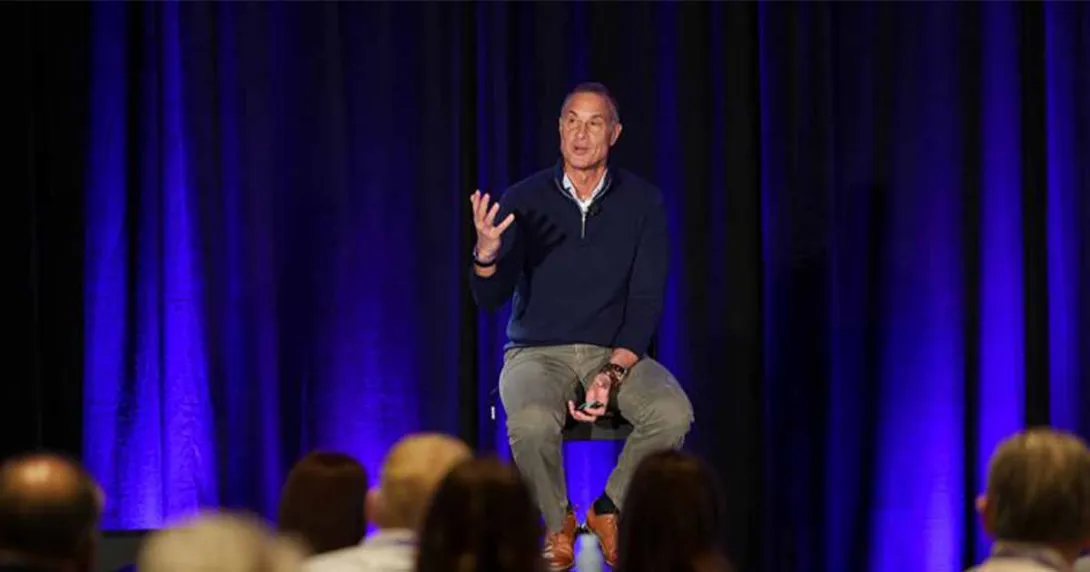
Ambient listening artificial intelligence and cloud computing are two of the technologies Marcus Perez is keeping a keen eye on at the Exhibit Hall of HIMSS25. Not to mention digital health, which is close to his heart.
Perez is president of Altera Digital Health, in Booth 2532 at HIMSS25, taking place in Las Vegas this week. The company is a health IT vendor of digital health systems.
Browsing the Exhibit Hall, Perez tells attendees to not get caught up in "shiny object syndrome" – he says healthcare executives should know from experience that the industry does not move as quickly as expectations.
Healthcare IT News sat down with Perez to discuss his company's main message at the conference, the biggest technologies he is seeing at the show, and advice he has for hospital and health system attendees.
Q. What is the primary message you are relaying to HIMSS25 attendees?
A. Our main message to hospital and health system executives is that we measure our success by our clients' outcomes. Health IT vendors should be in the business of solving the complex problems organizations are facing and not just meeting regulatory requirements or developing new features for development's sake.
We aim to enable clinicians to focus on patient care by automating administrative tasks, providing real-time insights and simplifying workflows. Our vision for patients is to empower them to proactively manage their health through seamless self-service applications for personalized care and informed decision-making.
For organizations, our efforts are focused on improving patient outcomes, optimizing financial performance and enabling operational excellence by harnessing the power of data in real time where and when it's needed. This vision reflects the feedback clients have shared on the top priorities for their organizations, the providers they employ and the patients they serve.
Q. What are the high-profile technologies you're seeing this year, and why do you believe they are important to healthcare?
A. Though cloud computing is not new, it is becoming increasingly important in this next phase of healthcare's digital evolution. By leveraging cloud technology, healthcare organizations can give providers real-time access to critical information across various departments to facilitate better care coordination, enhance clinical decision making, reduce the risk of errors and improve patient outcomes.
The cloud also provides the infrastructure, scalability and computing power needed to handle large volumes of data. This is essential for organizations looking to expand care delivery options, such as remote patient monitoring and telehealth, as well as a range of artificial intelligence applications.
As AI takes center stage at HIMSS25, I anticipate a lot of activity around applications that enable providers to both document and use data more seamlessly. Ambient listening AI, for example, alleviates documentation burdens by capturing patient-provider interactions in the background, generating a note, and pulling the datapoints from that note into structured sections of the medical record.
Documentation has become increasingly laborious for providers, so I expect to hear many discussions on technologies giving them valuable time back. Similarly, providers often must dig through patient records to find the information they need. With advanced analytics capabilities in place at the point of care, providers can make timely, informed decisions that reflect a more complete picture of the patient's health.
Q. What advice are you are offering CIOs and other IT leaders and workers on the show floor?
A. Keep an open mind at the show and use it as an opportunity to explore alternatives in the market. Big vendors often prescribe a one-size-fits-all approach to their systems that rigidly box in the customer. However, each organization is unique and deserves the same level of service and personalization that they aim to deliver to patients.
The entire healthcare industry would benefit from more healthy competition in the health IT space as this pushes vendors of all sizes to invest more in research and development.
I would also advise attendees to avoid getting caught up in "shiny object syndrome." Across the exhibit hall, you'll see tons of booth signage from companies promising to transform organizations with leading-edge innovations. However, we know from experience that healthcare does not move as quickly as our expectations.
In a complex industry where regulations abound and lives are at stake, focusing on incremental, sustainable achievements is a more realistic way to drive longer-term progress. The journey to better healthcare is less of a sprint and more of a hike. You have to take a lot of smaller steps and clear hurdles along the way, but the gains made become more evident as you near the summit.
Follow Bill's HIT coverage on LinkedIn: Bill Siwicki
Email him: bsiwicki@himss.org
Healthcare IT News is a HIMSS Media publication.
WATCH NOW: Seattle Children's Chief AI Officer talks better outcomes through the technology